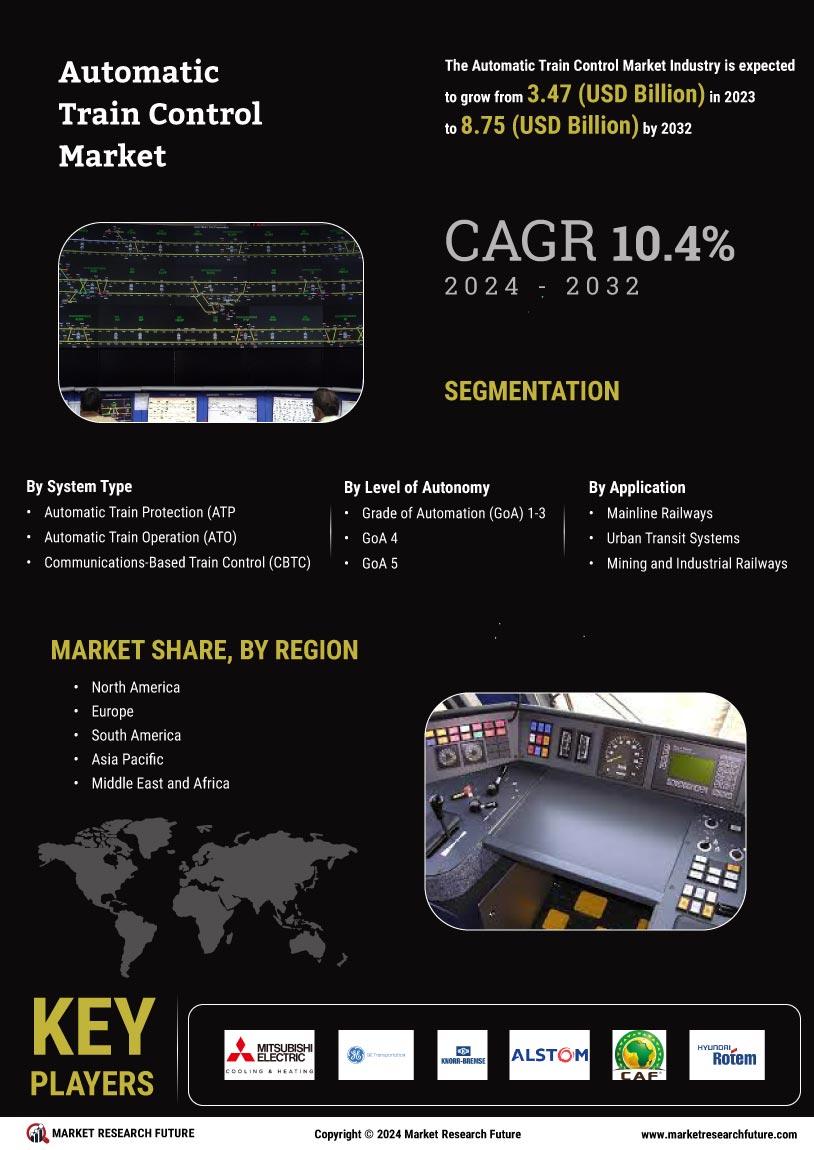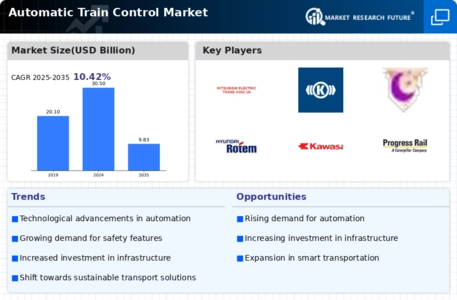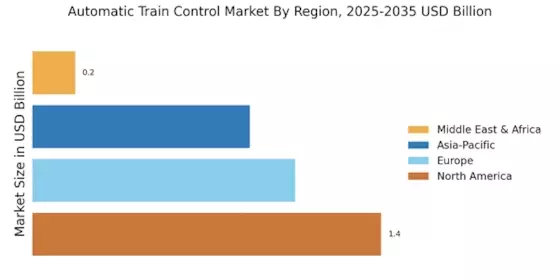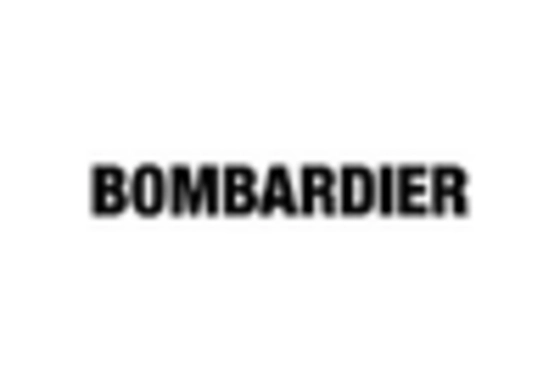The Automatic Train Control Market is currently characterized by a dynamic competitive landscape, driven by technological advancements and increasing demand for efficient rail systems. Key players such as Siemens (Germany), Alstom (France), and Thales (France) are at the forefront, each adopting distinct strategies to enhance their market positioning. Siemens (Germany) emphasizes innovation through its digitalization initiatives, focusing on smart rail solutions that integrate AI and IoT technologies. Alstom (France), on the other hand, is pursuing strategic partnerships to expand its global footprint, particularly in emerging markets, while Thales (France) is concentrating on enhancing cybersecurity measures within its control systems, reflecting a growing concern for safety and data integrity in rail operations. Collectively, these strategies not only bolster their competitive edge but also contribute to a more robust and technologically advanced market environment.
In terms of business tactics, companies are increasingly localizing manufacturing to reduce costs and enhance supply chain efficiency. This approach is particularly evident in regions with burgeoning rail infrastructure projects, where local production can significantly shorten lead times. The market structure appears moderately fragmented, with several players vying for dominance, yet the influence of major companies remains substantial. Their collective actions shape industry standards and drive innovation, creating a competitive atmosphere that encourages continuous improvement and adaptation.
In August 2025, Siemens (Germany) announced a partnership with a leading technology firm to develop next-generation train control systems that leverage machine learning algorithms. This strategic move is poised to enhance operational efficiency and reduce maintenance costs, thereby positioning Siemens as a leader in the digital transformation of rail systems. The collaboration underscores the importance of integrating advanced technologies into traditional rail operations, potentially setting new benchmarks for performance and reliability.
Similarly, in September 2025, Alstom (France) secured a significant contract to supply its advanced signaling systems for a major urban transit project in Asia. This contract not only reinforces Alstom's commitment to expanding its presence in high-growth markets but also highlights the increasing demand for modernized rail infrastructure. The strategic importance of this contract lies in its potential to enhance urban mobility and reduce congestion, aligning with global sustainability goals.
In October 2025, Thales (France) launched a new cybersecurity framework specifically designed for rail systems, addressing the rising threats to critical infrastructure. This initiative reflects a proactive approach to safeguarding rail operations against cyber threats, which are becoming increasingly sophisticated. By prioritizing cybersecurity, Thales positions itself as a trusted partner in the rail industry, ensuring that safety and reliability remain paramount in the face of evolving challenges.
As of October 2025, the Automatic Train Control Market is witnessing significant trends such as digitalization, sustainability, and the integration of artificial intelligence. Strategic alliances among key players are shaping the competitive landscape, fostering innovation and collaboration. The shift from price-based competition to a focus on technological advancement and supply chain reliability is evident, suggesting that future competitive differentiation will hinge on the ability to innovate and adapt to changing market demands.


















Leave a Comment